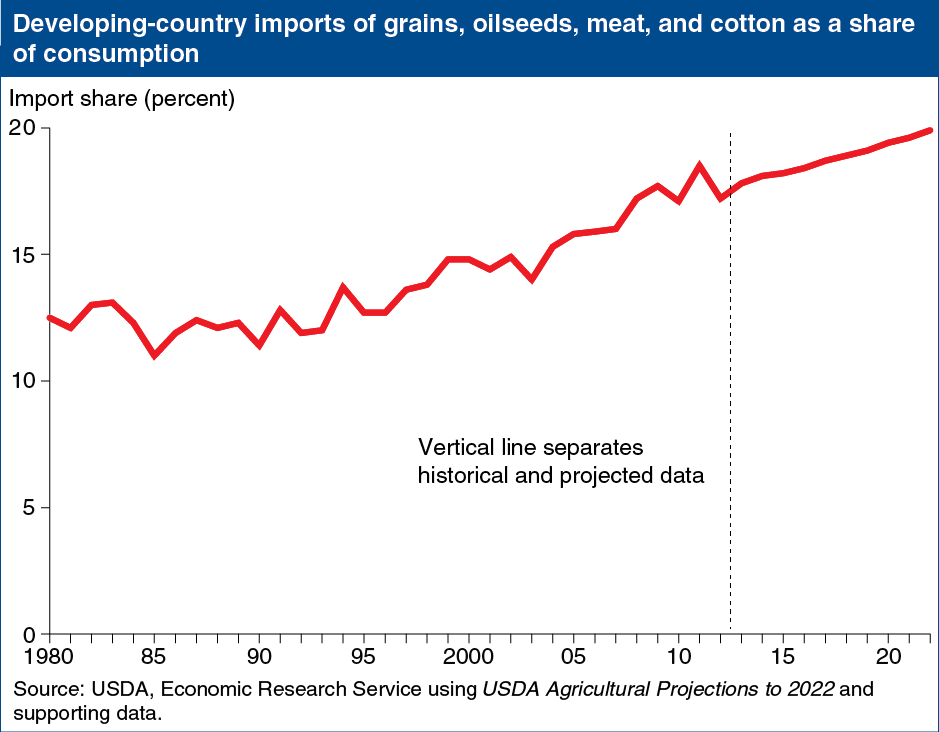Developing-country agricultural imports to account for a growing share of consumption
- by Economic Research Service
- 8/22/2013

According to USDA’s baseline projections, developing-country demand for agricultural products is expected to increase faster than production in those countries, leading to continued growth in import demand. Developing countries are projected to account for 92 percent of the total increase in world meat imports, 92 percent of the increase in total grains and oilseeds imports, and nearly all of the increase in world cotton imports. The growth rate for developing-country consumption of total grains and oilseeds is projected to be about 17 percent faster than the rate for production. As a result, the gap between consumption and production will continue to widen, and these countries will become more import dependent. While these trends will create new opportunities for the United States to expand agricultural exports, they also present new challenges to U.S. exporters. Instead of a limited number of large importing countries, the global market now includes more countries with smaller import needs, requiring new marketing strategies by U.S. and other exporters. This chart can be found in Developing Countries Dominate World Demand for Agricultural Products in the August 2013 Amber Waves.

